In the working kitchen garden on Gleneagles Estate, head grower Jo Campbell works to Michelin-starred standards and supplies Restaurant Andrew Fairlie. Read more about how she plans and grows in the garden and discover 18 of the plants she swears by below.
1
Brassica oleracea ‘Nagoya Red’ (ornamental kale)

These colourful rosettes are more common in floral displays than in the kitchen garden, but careful harvesting from the centre of the plant provides tender leaves with a delicate flavour. The Nagoya series comes in a mix of fuchsia-pink and creamy-white shades that retain their colour when steamed and add a mellow flavour to autumnal game dishes. Sow in June for an autumn harvest. Plant through black matting to prevent soil splash on the leaves. 30cm. UDSA 7a-11.
More on edible gardening
2
Tagetes lucida (Mexican tarragon)
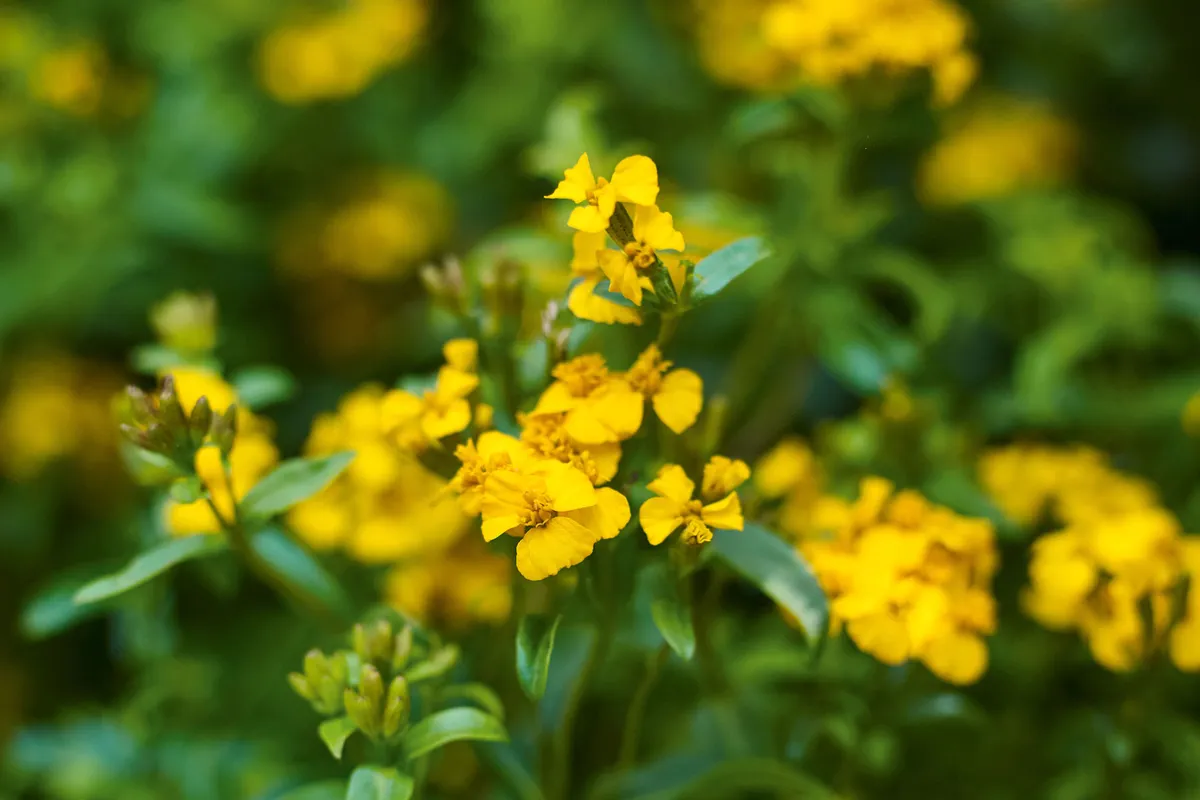
Produces a mass of small, golden-yellow blossoms and has a warm, peppery, anise-liquorice flavour that combines well with savoury dishes of veal, fish and eggs. Stronger in flavour than French tarragon, it keeps this robust flavour during cooking. Grow as an annual and cover the seed with vermiculite to help germination. Deadhead regularly for a continuous supply of fresh flowers. 90cm. RHS H3, usda 8a-11b.
3
Raphanus sativus 'Longipinnatus' (red meat or watermelon radish)

A robust radish with firm, crisp flesh and a light, peppery flavour. Eat raw, finely sliced on a mandolin, to appreciate its vibrant-pink colour. Also ideal for pickling, fermenting and cooking as a vegetable. Sown from July onwards, it takes eight weeks to grow and can be harvested from golf-ball to tennis-ball size. Slugs can be a challenging pest. 60cm.
4
Rumex scutatus (buckler-leaf sorrel)
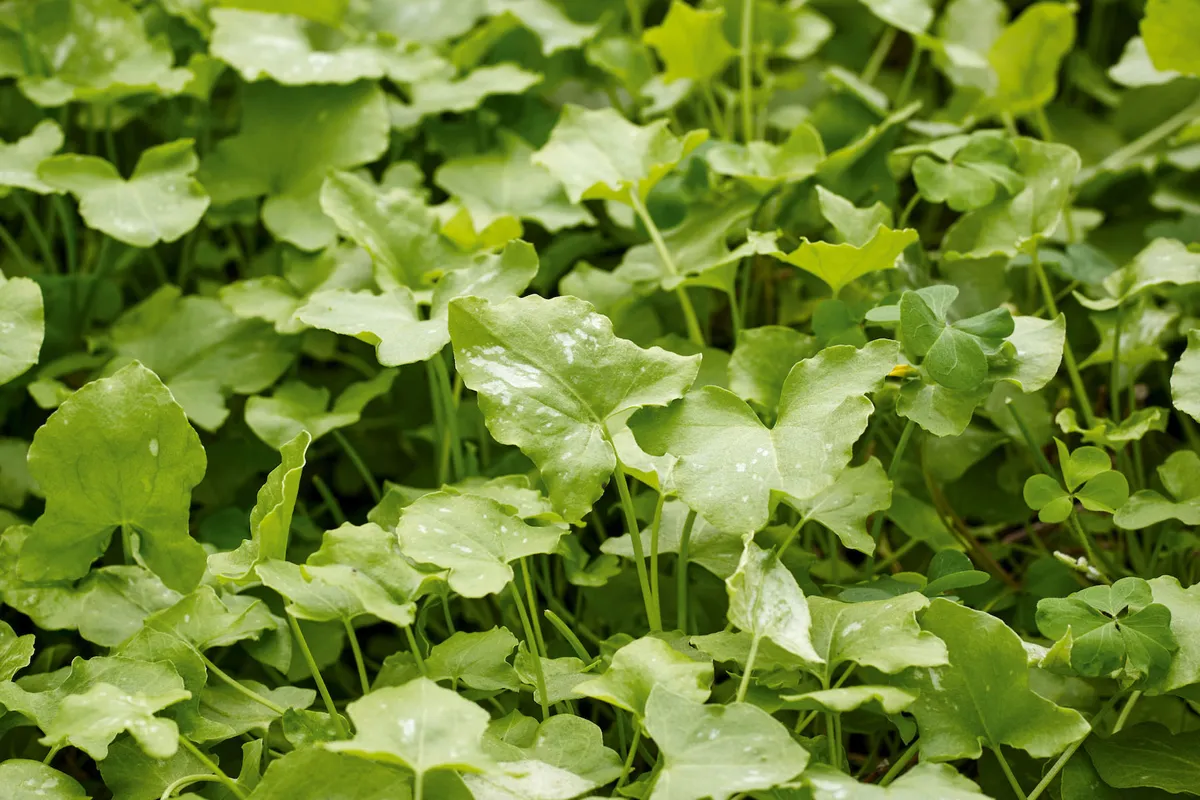
The shield-shaped leaves of this perennial herb have a sharp-sour, citrus taste, similar to Bramley apple skin. Use sparingly; the acidity of just a single leaf will cut through fatty meats and complement fish perfectly. Ideally, rotate on two patches and harvest from spring through to autumn, cutting back regularly to encourage new growth. Propagate by division. 20cm.
5
Brassica oleracea ‘Emerald Ice’ (Emerald Ice kale)
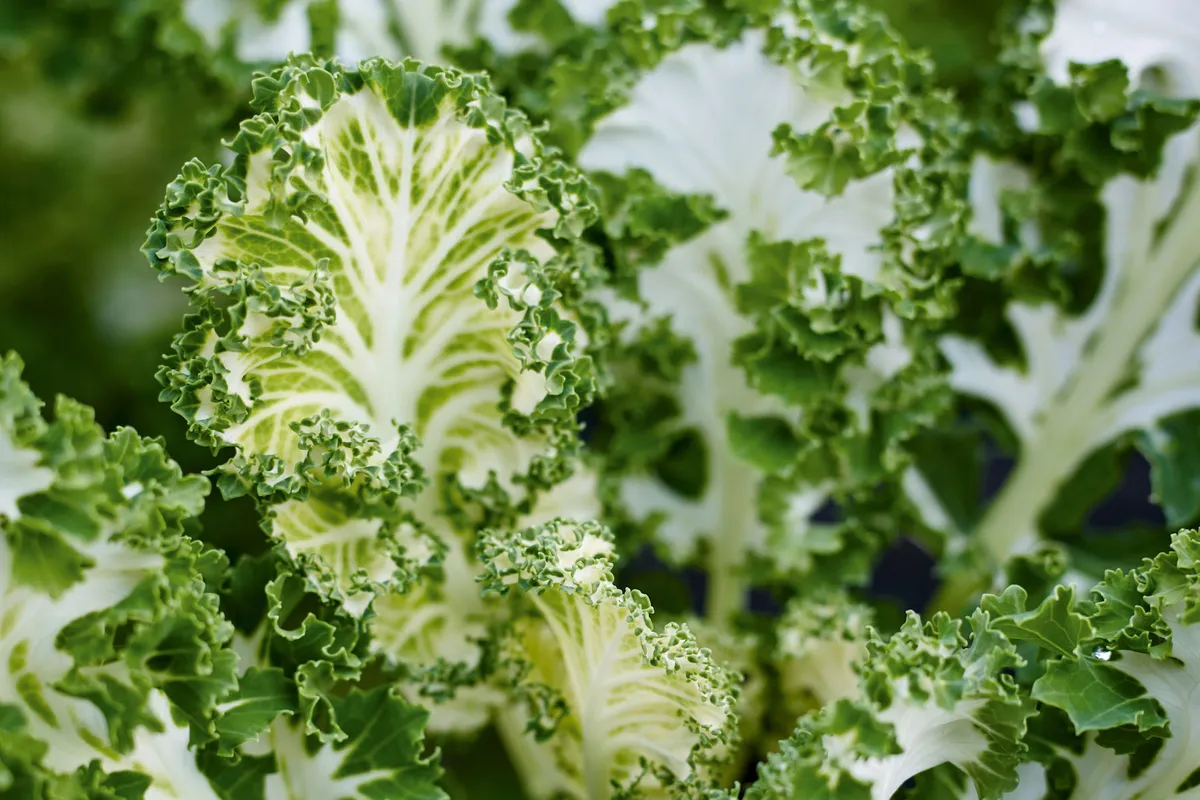
A cool-season brassica with a milder flavour and softer leaf than other kales. As plants mature, the green, ruffled leaves develop a pretty white centre that is still visible when steamed or blanched in salted water. A compact plant good for small vegetable gardens. Crop the lower, outer leaves first and allow a harvesting period of several months. 60cm.
6
Brassica rapa ‘Tokyo Cross’ (Tokyo Cross turnip)
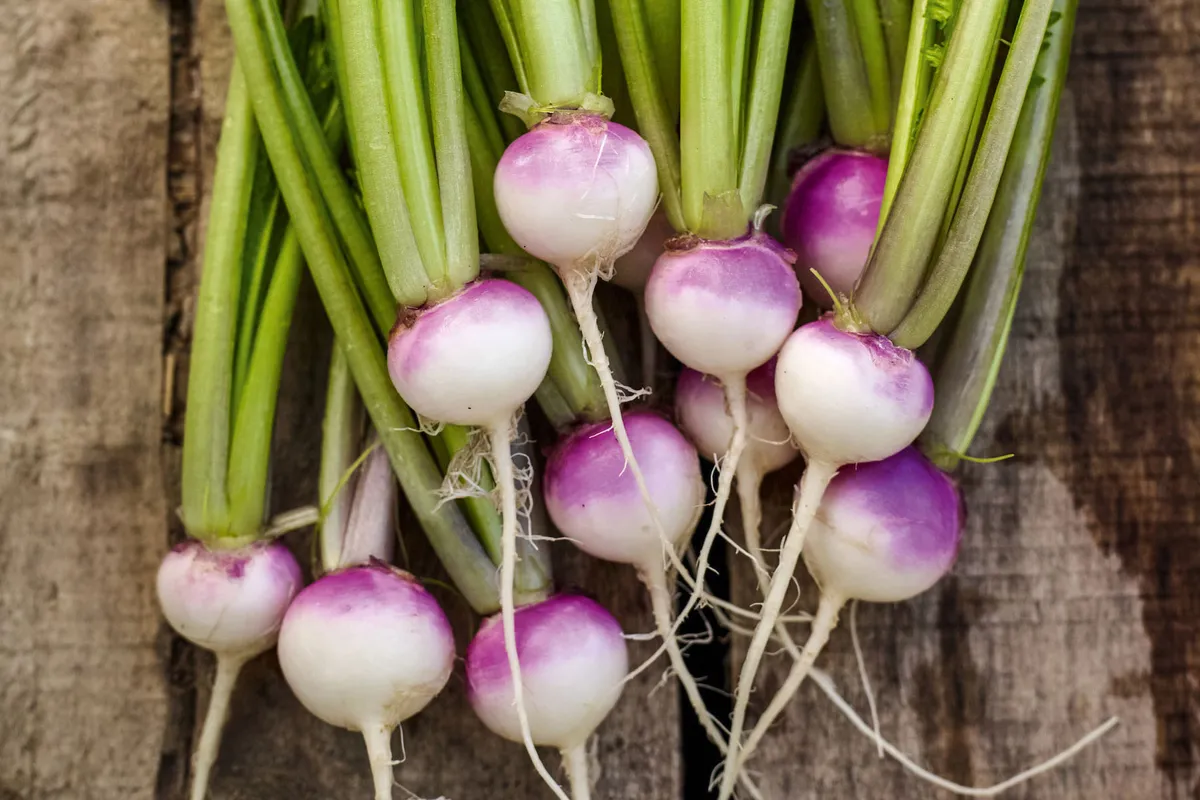
A pure-white hybrid with a delicate flavour and crisp, juicy crunch. Can be eaten raw as a snack or cooked and served as a canapé with salted butter. Its clean, neutral flavour also lends itself well to a cooked garnish for fish, and the tops can be wilted for greens. It takes five weeks to grow from seed. Station sow successionally, in blocks or drills, for a continuous supply. 15cm.
7
Oxalis spiralis subsp. vulcanicola ‘Burgundy’ (velvet spiral sorrel)
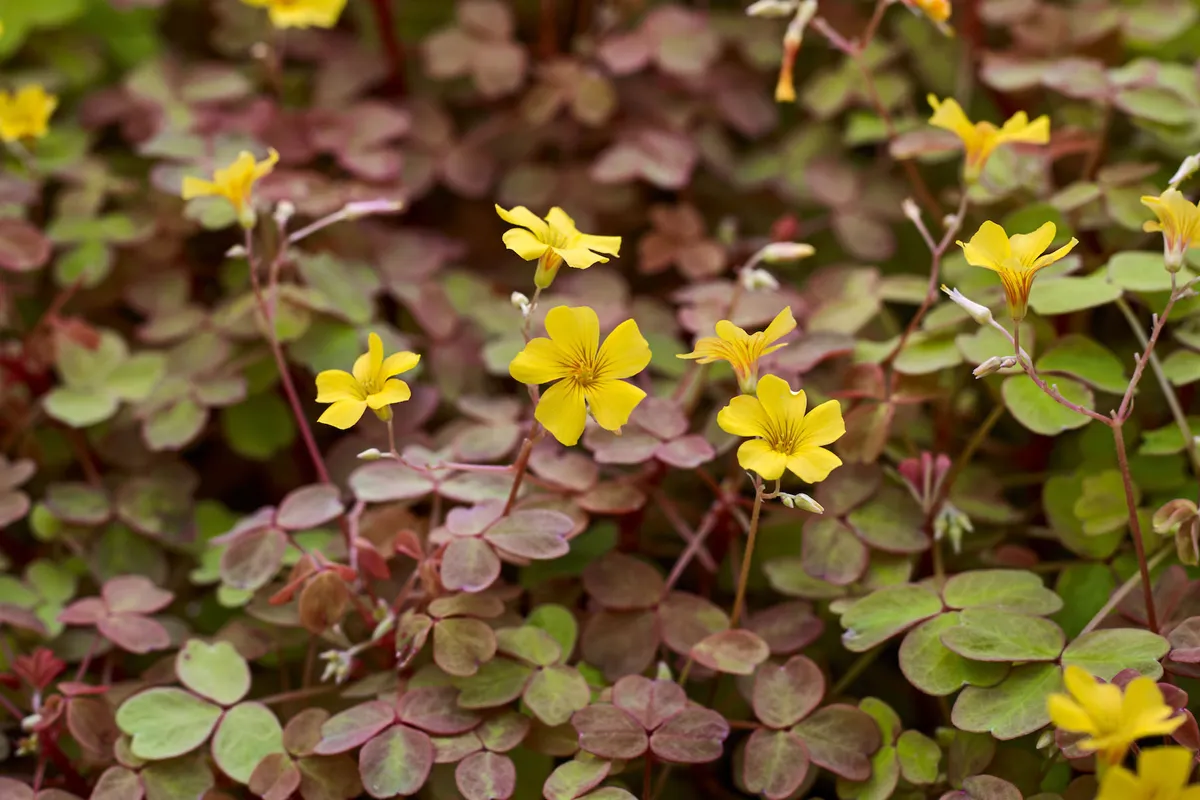
All oxalis contain oxalic acid, which gives its tangy, sour, sharp, refreshing flavour. Here 'Burgundy' with rich, wine-coloured leaves, is paired with Oxalis obtusa ‘Sunset’, which in autumn is a bright gold, and a green oxalis that has a much softer leaf texture than the other cultivars. A mix of cultivars adds a vibrant contrasting colour to a dish. Their acidity cuts through patés and terrines but also sits well with fish and adds a zingy surprise to salads. Grow ‘Burgundy’ and ‘Sunset’ as annuals and propagate from cuttings. Plants don’t like to be waterlogged. 20-30cm.
8
Brassica oleracea ‘Samantha’ (pointed savoy cabbage)
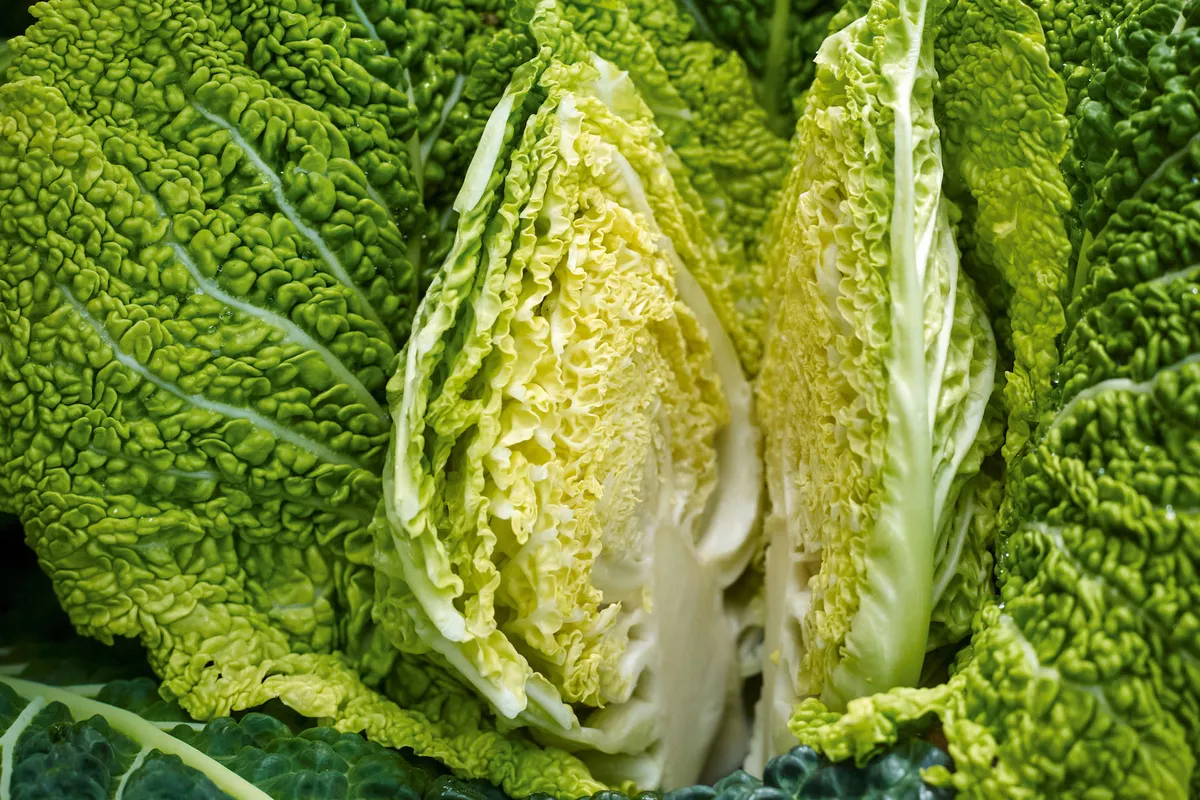
A change from the traditional large round savoy cabbages this cultivar produces a small, neat, compact, pointed head with a good savoury flavour but softer texture. Reveal the pale hearts by stripping away the coarser outer leaves, cut the heart in half to steam, butter and then char on a griddle to add colour and enhance flavours. Pair with any meat dish or with fennel, caraway and apples. Plant closely together through black matting to prevent weeds and hold moisture in the ground. Ready to harvest in autumn from a June/July sowing. 38cm.
9
Beta vulgaris ‘Chioggia’ (candy beetroot) and Beta vulgaris ‘Golden’ (golden beetroot)
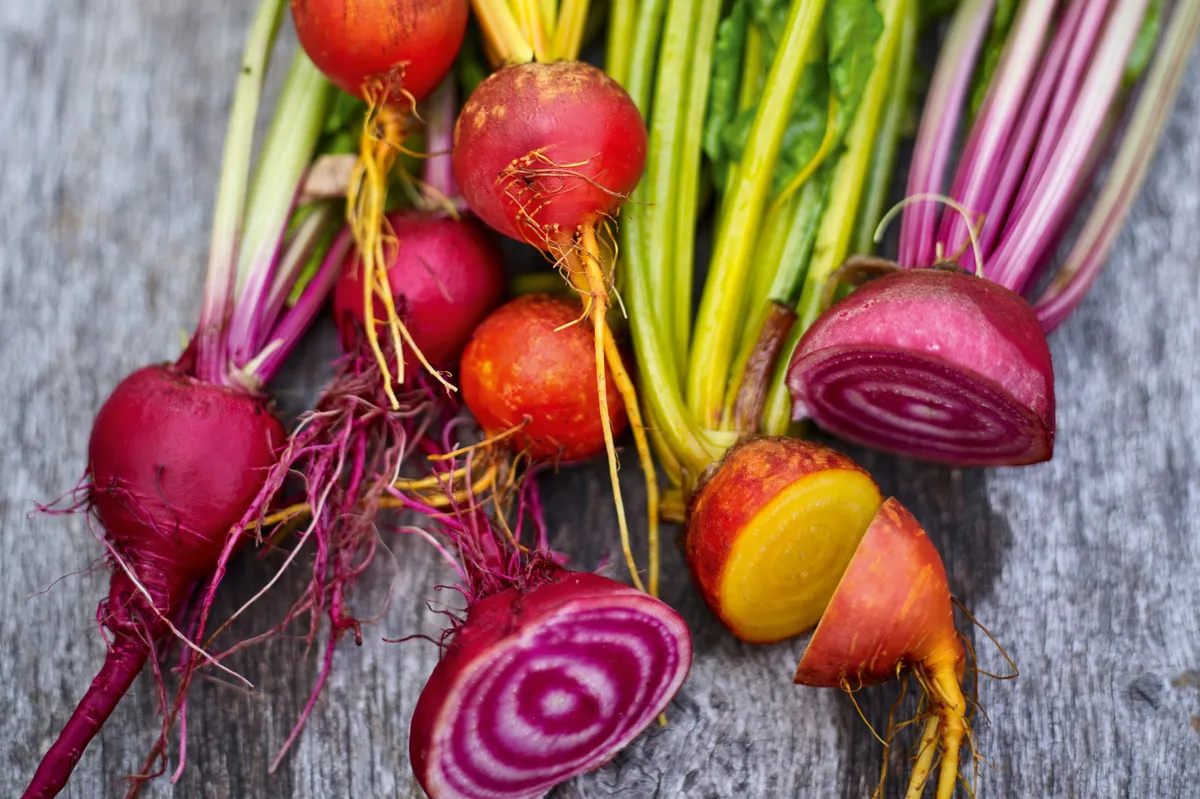
Candy beetroot with its magenta pink and white concentric circles is one of the sweetest cultivars with a mild earthiness. The golden variety has a more earthy flavour. Beetroot flavours intensify when cooked especially salt-baked whole, gently slipping off their skins and serving warm. 30cm.
10
Stachys affinis (Chinese artichokes or crosne)
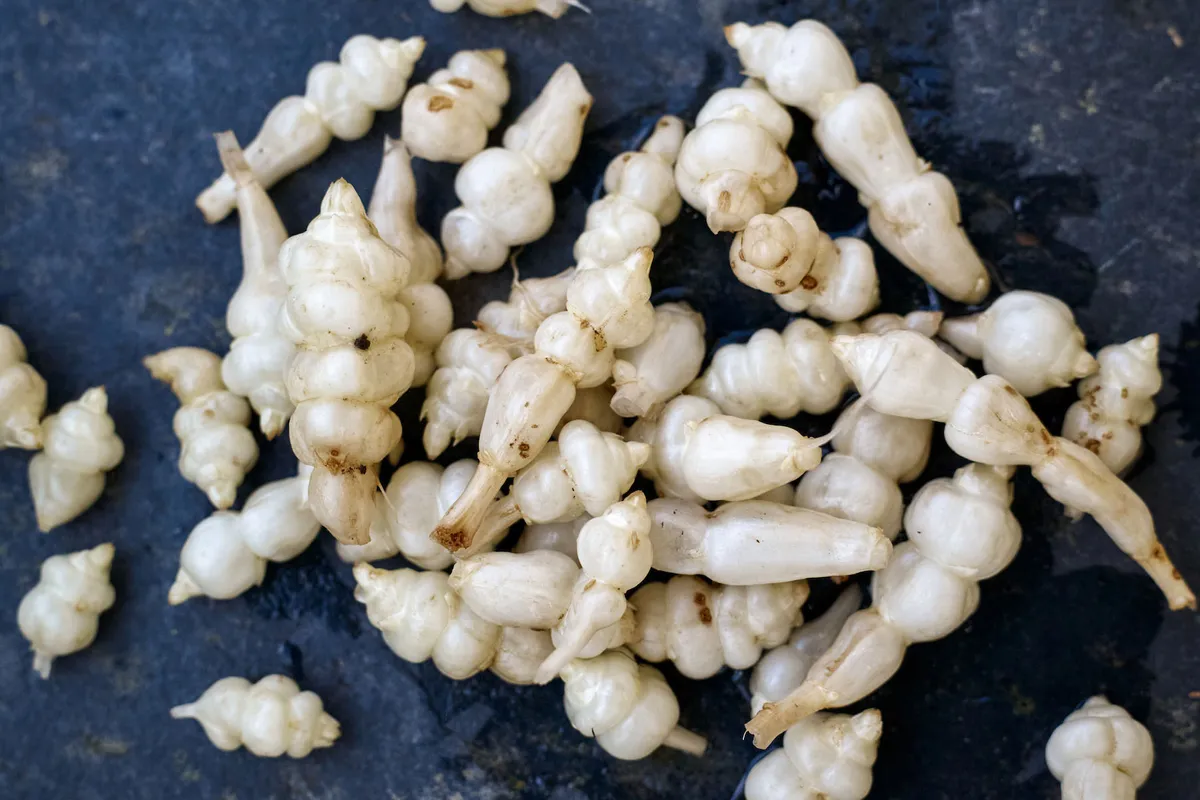
Small edible tubers, pearly white in colour with a juicy, crunchy texture. Blanch in boiling, salted water with a little added lemon juice to preserves their colour, then finish in a brown butter. Perfect with wild mushrooms, or dressed with olive oil in an autumnal salad of earthy beets, bitter chicory, walnuts and sorrel. Seed tubers are expensive to buy so keep some harvested crop back for stock and store in sand over winter for next year’s spring planting. 60cm.
11
Brassica oleracea Capitata Group ‘Gonzalez’ (baby cabbage)
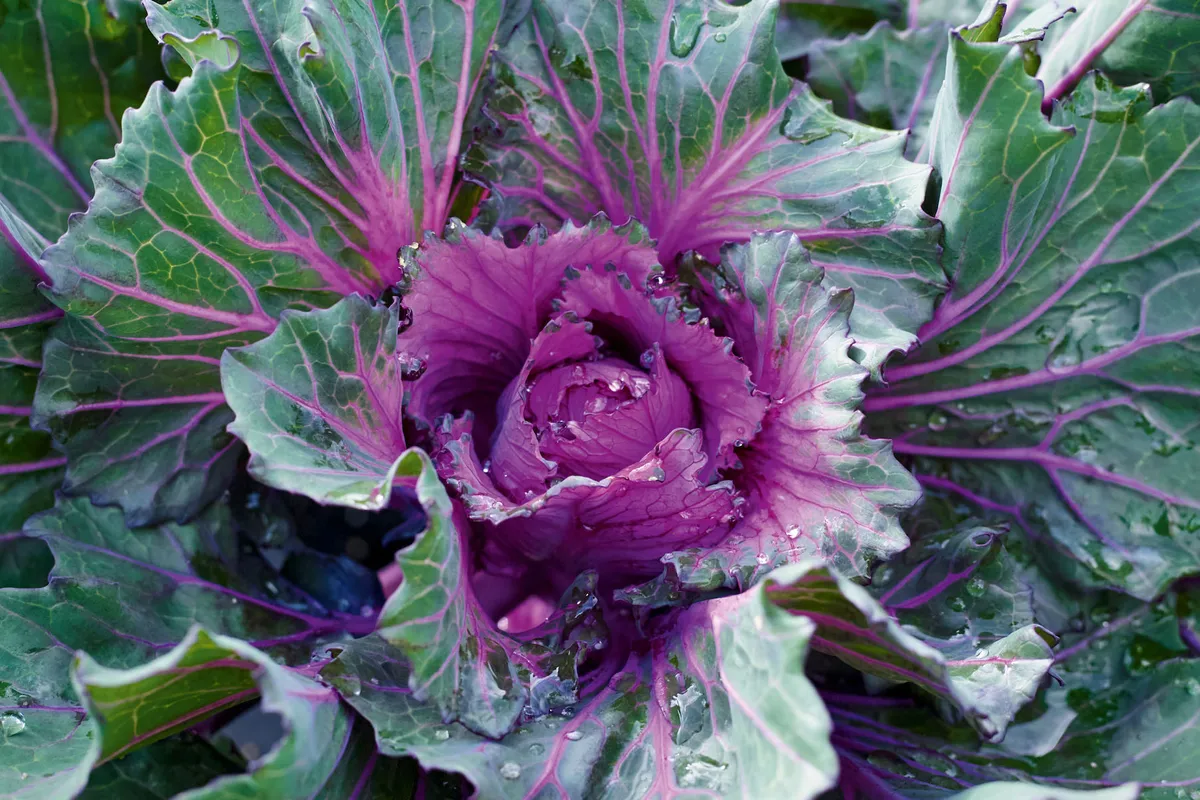
This ball-headed cabbage is perfect for mini vegetable production – harvest and strip away the outer leaves to use the tennis ball-sized heart. Picked young and fresh gives this cabbage a tender, sweet, crunchy leaf unlike larger cabbages that have a strong iron flavour. Once steamed the hearts have a soft, buttery texture. Flavours enhanced in a seasoned brine that soaks into the cabbage and gives it a meatiness. 30cm. AGM.
12
Tagetes minuta (apple marigold)

An unusual and unique-flavoured herb, light apple with citrusy, fruity undertones. Leaves, both fresh or dried, are perfect for making a refreshing infusion and can be infused into cocktails. Flavour is strong when grown as a microherb and used to garnish tropical fruit desserts. Seeds can be sown in spring and grown into a tall plant when leaves can be harvested and dried. 1.8m.
13
Mertensia maritima (oysterleaf)

Flat, fleshy, succulent blue-grey coloured leaves with an oyster-like flavour with mineral notes, reminiscent of its natural habitat of the seashore. The spoon-shaped leaves are perfect as a vehicle to serve as a canapé. Mimic its natural growing environment, which is a Scottish coastline, and provide good drainage and sandy soil. A low-growing plant it does not like root disturbance. 50cm.
14
Brassica oleracea Gemmifera Group ‘Ruby Crunch’ (red sprouts) ‘Ruby Crunch’
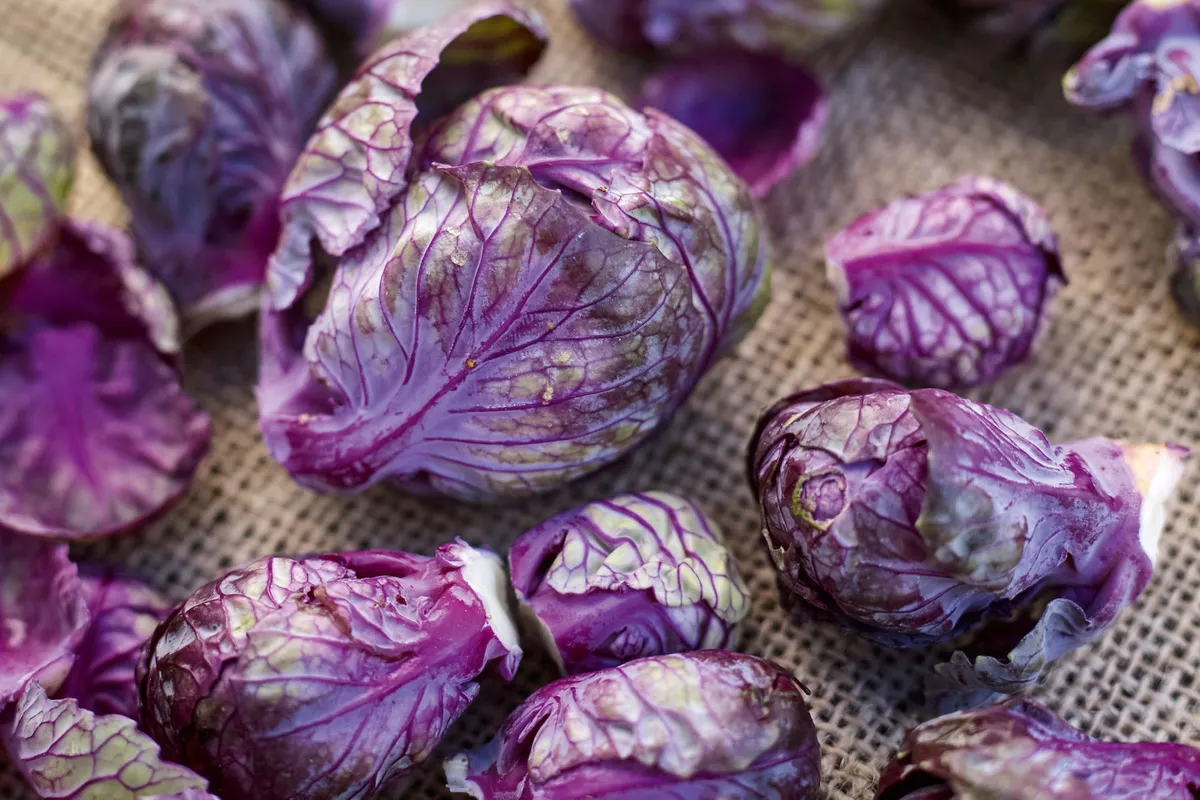
Brussels sprouts taste as good as they look. The buds have a milder, sweeter flavour than their green counterparts. Picked fresh and quickly blanched in seasoned water they retain their purple colour, and are a great accompaniment to seasonal game. Alternatively, shell the individual, tightly bound leaves apart and add them to a warm, autumnal salad with chestnuts, bacon and a honey dressing. 75cm.
15
Pastinaca sativa (baby parsnips)
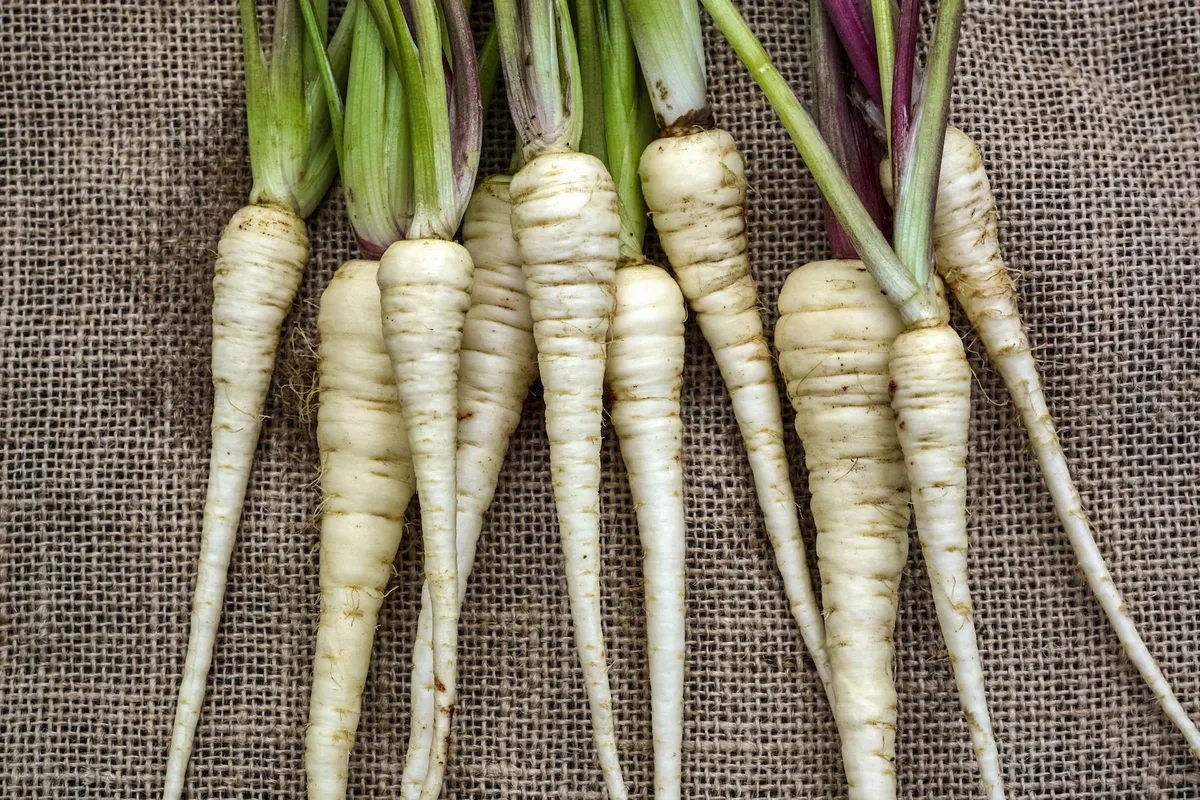
Ivory-coloured baby parsnips not only look beautiful served whole on a plate but have the same mild celery-like fragrance and intense sweetness of a traditional large parsnip. The benefit of harvesting them small is that the flesh is fine grained with no hard core. Baby parsnips are easily steamed whole, cooked in duck fat or roasted in a butter to caramelise and enhance their flavour, or with a garden honey glaze. Sow in June and July for autumn cropping. 60cm.
16
Beta vulgaris ‘Detroit Dark Red’ (beetroot cress)
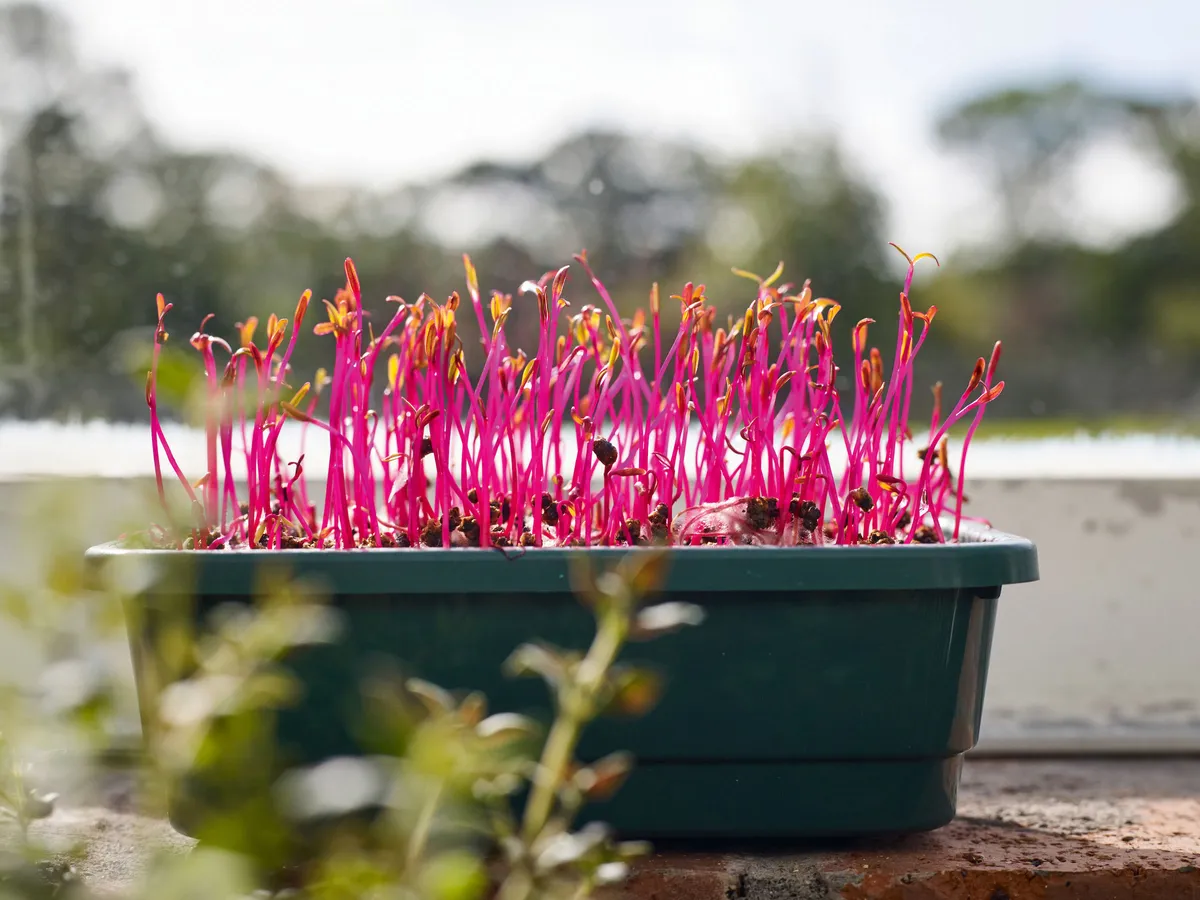
These delicate, vibrant, neon-pink beetroot shoots have an intense, earthy beetroot flavour and retain a high nutritional content. The fragile shoots require careful handling, but create an elegant dressing for an autumnal goats’ cheese salad – which they will complement in both colour and flavour. The beetroot seeds are excluded from light while growing to force the tender pink stems in seven days. 5cm.
17
Fragaria vesca ‘Semperflorens Alba’ (white alpine strawberries)
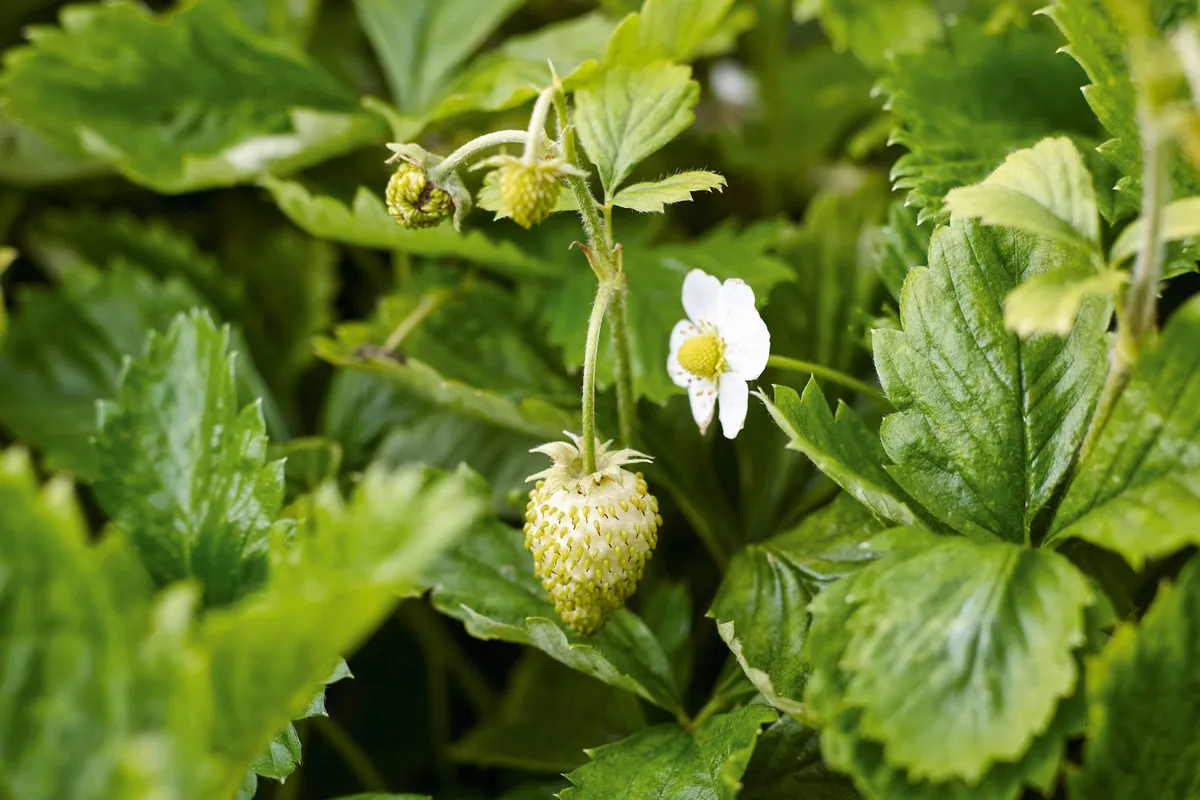
The creamy white berries are harvested from late summer onwards. The delicate berries need to be fully ripe when picked to appreciate their fragrant strawberry flavour with hints of pineapple and vanilla. Slightly larger than a wild strawberry, it lends itself well to both sweet and savoury offerings and a perfect pairing with patés and terrines. 15cm.
18
Daucus carota ‘Purple Sun’ (baby purple carrot)
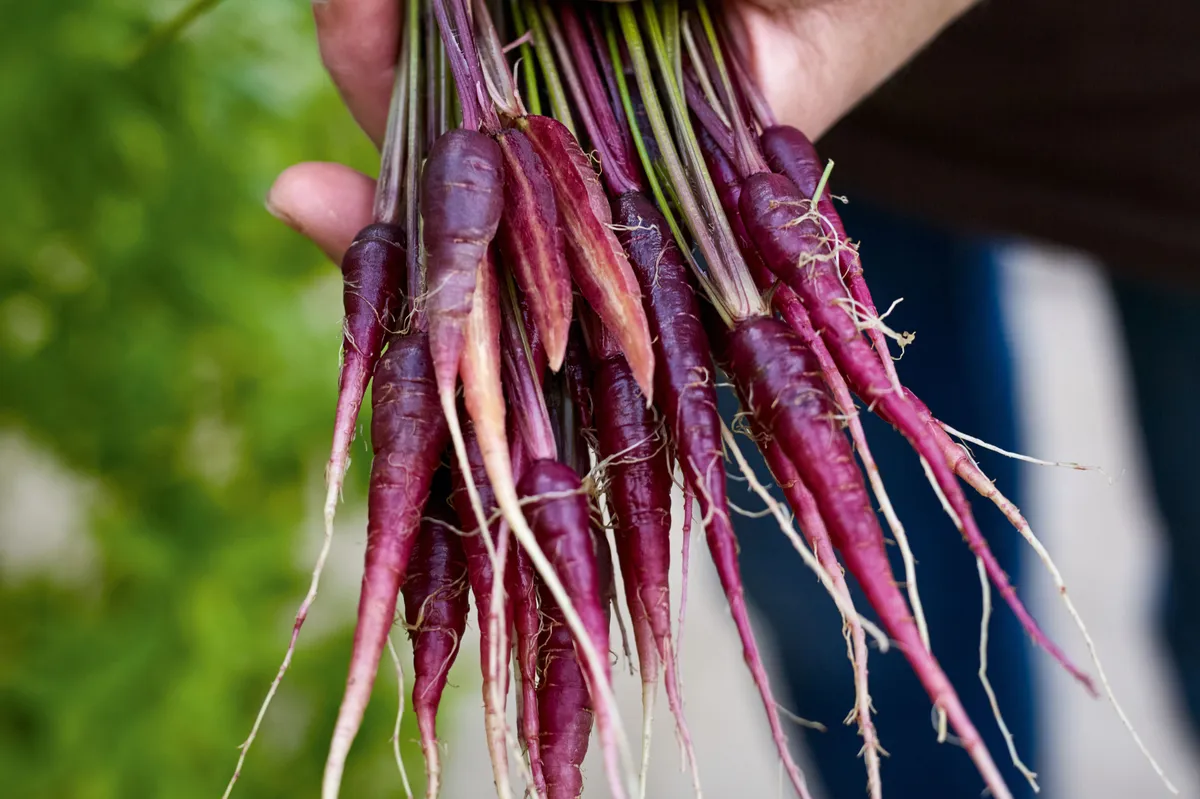
Pulled as a baby carrot, it has more sweetness and is high in antioxidants. Intensely dark colouring through to its centre is still retained after cooking. Looks striking served whole on a plate of autumnal puréed vegetables with kale and game. The flavour can be enhanced in an infused oil of cumin and coriander seeds. 45cm.